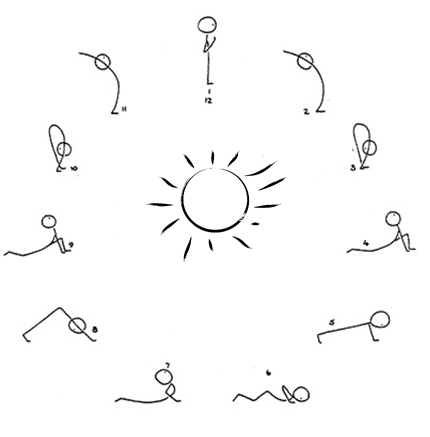Air Pollution is responsible for the premature deaths of approximately 7 million people worldwide each year, with about 4 million of these deaths occurring in Asia-Pacific, and 1.2 million in India alone.
How much pollution we breathe in is dependent on many factors, such as access to clean energy for cooking and heating, the time of day and the weather. Rush hour is an obvious source of local pollution, but air pollution can travel long distances, sometimes across continents on international weather patterns.
The theme of World Environment Day 2019 is “Beat Air Pollution”. Started in 1974, World Environment Day highlights various factors that affect the environment and the resultant destruction that is caused. It is a reminder to all citizens to become aware of the alarming factors and adopt sustainable measures to mitigate the damage already caused to our Earth and ensure that the future is made safer.
Air Pollution facts:
- 92 per cent of people worldwide do not breathe clean air
- Air pollution costs the global economy $5 trillion every year in welfare costs
- Ground-level ozone pollution is expected to reduce staple crop yields by 26 per cent by 2030
Human activity interferes with environment’s ability to regenerate and renew itself. Nobody is safe from this pollution, which comes from five main human sources. Household, Industry, Transport, Farming and Waste. These sources spew out a range of substances including carbon monoxide, carbon dioxide, nitrogen dioxide, nitrogen oxide, ground-level ozone, particulate matter, sulfur dioxide, hydrocarbons, and lead – all of which are harmful to human health.
Household – main source of air pollution at home is the burning of fossil fuels. Lack of access to clean energy and safe equipment to cook, heat/cool and light homes causes indoor air pollution – affecting 3.8 million people worldwide.
While governments push for cleaner methods of cooking (LPG, biogas, electric, etc), adopting the most commonly available alternate resources that do not cause pollution is the responsibility of us, citizens. Avoiding usage of materials/products that contain solvents and propellants, release toxic aerosols, when inhaled lead to fatal illnesses (hairspray, paints, fabric protector, cleaning products, deodorants, room deodorizers, air freshening sprays, fumes from reused oils) – can control indoor air-pollution.
Industry – In many countries, energy production is a leading source of air pollution. Coal-burning power plants are a major contributor, while diesel generators are a growing concern in off-grid areas. Industrial processes and solvent use, in the chemical and mining industries, also pollute the air.
Alternate sources of generating power can be the single largest measure to help control industry related emissions. Industries that generate effluents need to treat at source and not store the harmful discharges that release lethal toxins into the atmosphere.
Transport – Globally, transport sector contributes ¼th of CO2 emissions. These emissions have been linked to nearly 400,000 premature deaths and double that figure to dementia. Almost ½ of all deaths of air pollution is directly linked to diesel emissions.
Conscious effort to reduce usage of personal vehicles, promoting use of public transport, adopting fuel-efficient vehicles, are few of the actions that can diminish transport emissions related pollution.
Farming – There are two major sources of air pollution from farming: livestock, which produces methane and ammonia, and the burning of agricultural waste. Methane emissions contribute to ground-level ozone, which causes asthma and other respiratory illnesses. Methane is also a more potent global warming gas than carbon dioxide – its impact is 34 times greater over a 100-year period. Around 24 percent of all greenhouse gases emitted worldwide come agriculture, forestry and other land-use.
There are many ways to reduce air pollution from this source. People can move to a plant-based diet and/or reduce food waste, while farmers can reduce methane from livestock by optimizing feed digestibility and improving grazing and grassland management and avoid burning of agricultural stubble.
Waste – Open waste burning and organic waste in landfills release harmful dioxins, furans, methane, and black carbon into the atmosphere. Globally, an estimated 40% of waste is openly burned. The problem is most severe in urbanizing regions and developing countries. Open burning of agricultural and municipal waste is practiced in 166 out of 193 countries.
Improving the collection, separation, and disposal of solid waste reduces the amount of waste that is burned or landfilled. Separating organic waste and turning it into compost or bioenergy improves soil fertility and provides an alternative energy source. Reducing the estimated one-third of all food that is lost or wasted can also improve air quality.
Other sources – Not all air pollution comes from human activity. Natural calamities and occurrences such as volcanic eruptions, dust storms and other natural events also cause Air pollution problems. Sand and dust storms are equally concerning. Fine particles of dust can travel thousands of miles through these storms, which may also carry pathogens and harmful substances, causing acute and chronic respiratory problems.
While it may be impossible to control natural disasters, human actions that aggravate such activities (mining, deforestation,
Our Environment has the capability to restore itself, for all natural causes of pollution. We, as responsible citizens, can take additional, simple measures that can help the environment in its efforts to clean the Earth.
Carbon sequestration by afforestation (a natural process by which pollutants are absorbed by trees and water bodies from the atmosphere) is a sure and cost effective means to mitigate air pollution and climate change, in addition to sustainable practices enumerated above. During photosynthesis, trees absorb CO2 from the atmosphere and later use it to build trunks, stems and roots; one tonne of carbon stored in a tree translates into 3.67 tonnes of carbon removed from the atmosphere and release of 2.67 tonnes of oxygen! Currently, forests store 45% of all land carbon. An estimated 35 billion tonnes of CO2 are produced by human activities and natural processes are absorbing just half of it; the remaining contributes to climate change.
A study by IISc, estimates, cities account for 78% of carbon emissions, and urban forests act as carbon sinks; WHO recommends 9.5 sqm of greenspace per person in an urban environment. Native trees that last long and have high wood density (Banyan, Neem, Tamarind Madhuca, Arjuna…) along with native fast growing trees (Teak, Mahogany, Bakul, Gulmohur…) are ideal choices rather than exotic/introduced species. Eg: GEER (Gujarat Ecological Education and Research) found that a Teak tree can absorb 3.70 lakh tonnes of CO2 in its lifetime of 50 yrs!
In addition to large trees, shrubs, plants, and grasses, as also water bodies help in reducing air pollution. Along with sustainable personal practices, every person must aim to plant at least 10 trees, to mitigate own causes of carbon emissions and help clean Our Earth.
Short videos: Air Pollution 101 | National Geographic
Awareness is a start – Action is the result!
compiled from various online sources and books, including UN-Environment’s greeningtheblue.org



